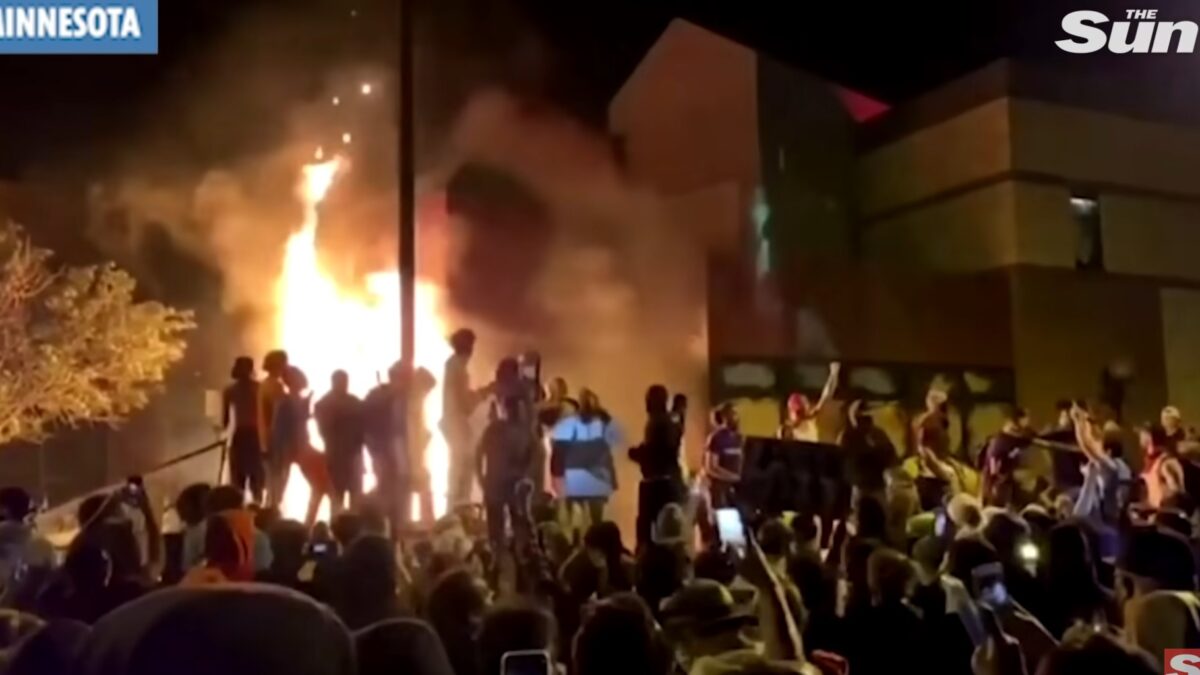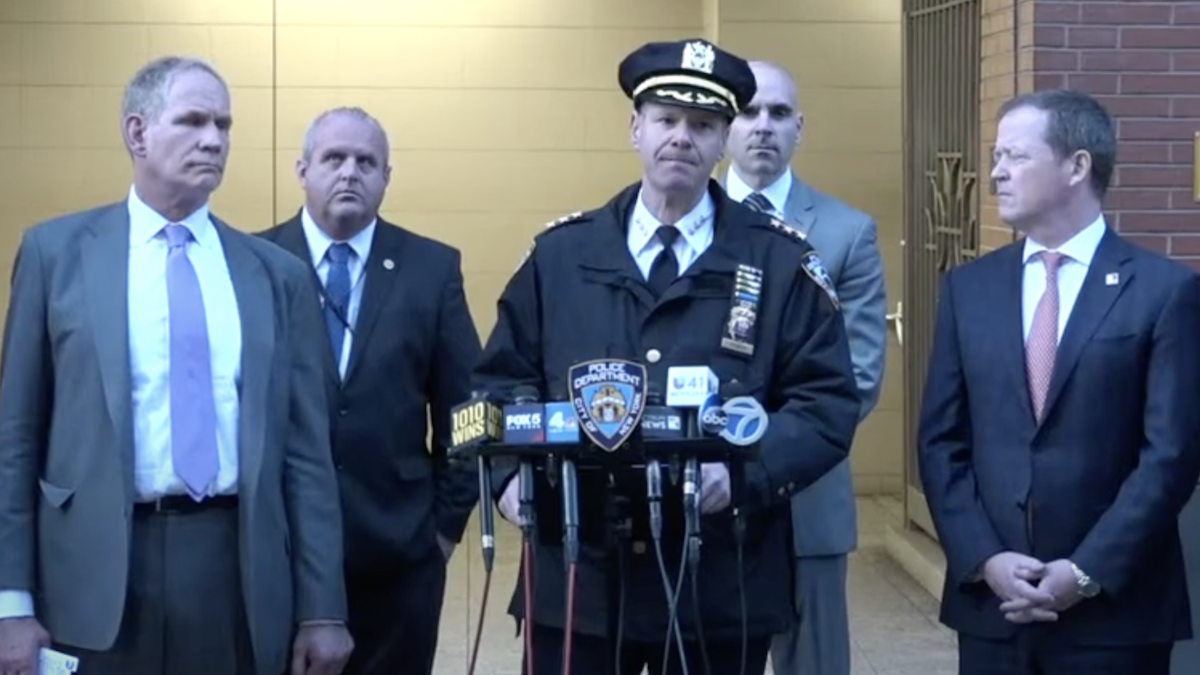A St. Louis man was recently found guilty of murdering David Dorn, a retired police captain, during the riots and looting that broke out in the summer of 2020. But that doesn’t mean the wounds this country endured during that summer are healing. In fact, many on the left are actively working on gaslighting the American public about the nature of these riots and redefining the role that race riots play in our collective history.
The latest effort may be found in Elizabeth Hinton’s book, “America on Fire.” Hinton says the African American riots of the 1960s were really political protests. In fact, she goes much further and claims that all of the predominantly black disturbances since the ’60s were revolts against racial injustice. “The so-called urban riots from the 1960s to the present,” she says, “can only be properly understood as rebellions.”
This claim has won approval from the leftist media, and it might resonate with those who are intuitively sympathetic to the long black struggle for equal treatment, but it simply does not square with the facts.
Some of the more significant mass violence events were anguished cries in response to shocking events. The assassination of Martin Luther King in April 1968, which touched off a spasm of violence, was one such event. In that same category are the fatal police beating of a black businessman in Miami in 1980 and the brutal police assault on Rodney King in Los Angeles in 1992. One can debate whether the behaviors during the ensuing mass violence in Miami and Los Angeles should be called “riots.” However, the assault on innocents and the wanton destruction of property give credence to the designation.
It is nonetheless true that perceived racial injustices triggered these events. The same could be said about the violent events following the death of George Floyd in 2020. But going back to the events of the late 1960s, most disturbances had no clear cause or the incidents that triggered them were utterly banal and the responses totally disproportionate.
In one of the worst disturbances in 1967 in Detroit, where 43 people died in four nightmarish days of turmoil, the trigger was a police raid on a club serving alcohol after 2 a.m. in violation of state law. The club was located in a dingy second-floor apartment in a rundown black area of the city and had been raided several times before without incident. But it was unusually hot and crowded on the Saturday night when the violence began, and the raid ended in a melee. Crowds quickly formed outside as the arrestees were removed and two black youths urged the onlookers to violence. By 6 a.m., 30 windows had been broken, and looting had begun. The first store victimized was the black-owned Hardy’s Drug Store. By 8 a.m., the mob had swelled to 3,000, and the outnumbered police did nothing to stop the spreading window breaking and theft. Ultimately, 2,500 stores were looted, burned, or destroyed. Subsequent charges of police brutality during the raid never were substantiated.
Was this a rebellion? Clearly not. Whatever the initial resentment of the police raid, the subsequent behavior, mostly stealing and burning, was unquestionably a riot or a rampage without any political message. And there were hundreds more just like it in this period. A careful quantitative analysis by Susan Olzak and Suzanne Shanahan found that 60 percent of these events “had no clear-cut target or symbol,” and only 27 percent were in response to some police incident. Furthermore, another quantitative study found that economic conditions bore no relation to the disturbances. In his classic study of disorders in 673 cities between 1961 and 1968, Seymour Spilerman found that no deprivation factors were positively or strongly related to the violence.
The looting and burning of shops were not unusual behaviors in many of the areas where these violent events occurred. In Detroit, two-thirds of all arrests were for theft. In Newark, more than $8 million in inventory was lost due to stealing and damage to stock.
A quantitative study of shopkeepers in riot areas found that the rioters were selective, targeting the better quality stores. The quality of the merchandise had more salience in explaining the choice of targets than any other factor, including retaliation for perceived abuse by the merchant or sheer proximity to the civil disorder. Setting shops ablaze was common during the riots. In 1967 and 1968 alone, there were over 10,600 arson incidents. Even black store ownership afforded no protection. Approximately 27 percent of the stores destroyed in Detroit were owned by African Americans.
The 1960s were a period of great ferment when the youth of the day (the same Baby Boomers who are now passing from the scene) dominated both demographically and culturally. There were countless protests against the Vietnam War and overt Jim Crow racism. This rebellious atmosphere surely had something to do with urban violence.
But for African Americans, it also was a period of tremendous progress in terms of rights and economic benefits. Black family income had doubled since 1940. By 1970, black unemployment had fallen to a mere 4.2 percent, and poverty levels had sunk to 34 percent of the population. The Kennedy and Johnson administrations fully supported civil rights laws and the Civil Rights Act of 1964 dealt a mortal blow to Jim Crow. Congress then passed the Voting Rights Act of 1965, ensuring African American influence in the political system. Johnson also got Congress to adopt his War on Poverty legislation which was intended to primarily benefit low-income African Americans. What a strange time for a “rebellion” If there was a broader underlying cause, raised expectations of immediate material gain is the most likely candidate.
Young black radicals espousing revolution provided a rationalization for the disturbances. H. Rap Brown, Stokely Carmichael, and the Black Panthers reaped great media attention with their inflammatory remarks. But they did not gain much traction with the average African American. When Carmichael spoke at Detroit’s Cobo Arena one year before the riot, 500-600 people heard him denounce moderate civil rights groups. Only a month earlier, Dr. King had preached nonviolence in the same 12,000-seat hall to a standing-room-only crowd. And in a 1968 poll of more than 5,000 people in 15 big cities found that only 15 percent of black respondents favored violence to gain rights, whereas 39 percent preferred laws and persuasion, and 38 percent favored nonviolent protest. Moreover, 90 percent of African Americans did not think that police brutality caused riots.
It’s understandable that the black public didn’t endorse violence. They paid a terrible price for the disorders. One careful analysis of the period 1964 through 1971 counted an extraordinary 752 riots, resulting in 228 deaths, 12,741 injuries, 69,099 arrests, and 15,835 incidents of arson. And this does not address the enormous monetary loss: the total destruction of businesses, mostly small shops; the concomitant loss of jobs; the millions expended by all levels of government in attempts to control the mayhem; and the millions more lost in tax revenues. Cities like Detroit and Newark took decades to recover; some say they never really recovered.
When the facts of mass violence are studied without ideological assumptions, the complexities become apparent. No one cause fits all, and the claim that they are all rebellions for racial justice is belied by the historical details. Mass looting for personal gain and aimless destruction are riots, not rebellions.









